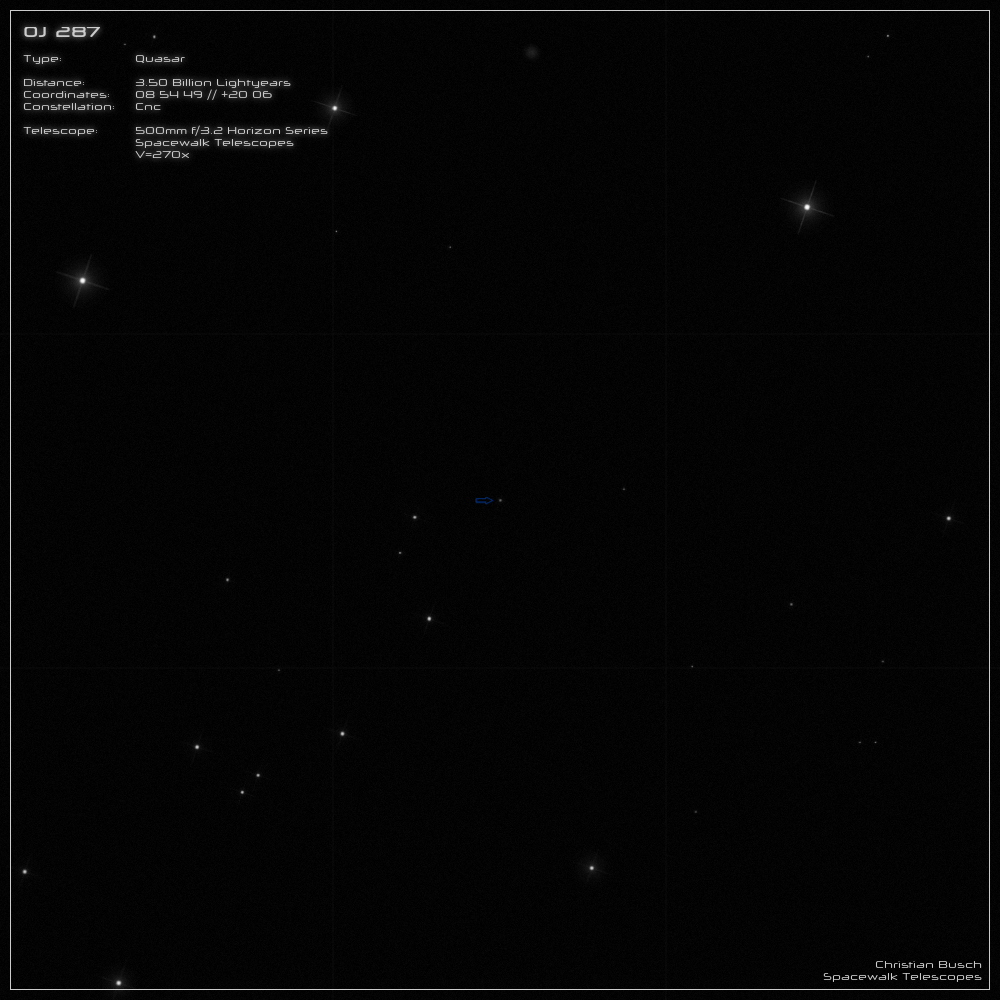OJ 287 - Quasar
"OJ 287" is a quasar (QSO) in the constellation Cancer, which can be found a few degrees east of the open star cluster Messier 44. The QSO is located at a
distance of about 3.5 billion light-years and has an apparent magnitude of 15.4mag. From this an absolute magnitude of M= -24.7mag can be calculated,
which corresponds to a luminosity of 700 billion suns.
The quasar is a double system of two supermassive black holes (SMBH), which have masses of 18 billion and a 100 million solar masses. Accordingly, their
diameter is huge: the main component is about 9x larger than our solar system, and even the "small" SMBH still has an event horizon that would reach as far
as the asteroid belt. The lighter black hole orbits its much heavier partner once in 12 years, punching through its accretion disk and causing bursts of brightness.
With their help the two masses could be determined very accurately.
With each orbit, the two black holes come closer together and it is assumed, that they will merge in about 10,000 years.
----------------------------------------------------------------------------------------------------------------------------------------------
Knowing all this, the journey to such an object is of course especially exciting. The starting point was the beautiful open star cluster Messier 44 in the
constellation of Cancer. On the way to "OJ 287" you will also pass "X Cnc" - a great carbon star glowing in a deep orange. Then you leave the familiar
surroundings of our home galaxy and head several billion light years into the depths of the universe.
The right location was quickly found and the distinctive trapezoid also easily noticed. All of its stars were easy to see with averted vision at 270x, thanks to
20" aperture. One of them is OJ 287 - you just have to know which one. It is the "little star" at the northwest corner.
This star point looks no different from all other star points in the eyepiece, but still hides something completely different: namely two orbiting supermassive
black holes. :))

